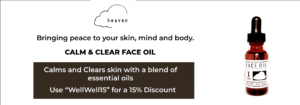By John Salak –
Just about everyone thinks they know how to brush their teeth correctly. Sadly, a significant portion of these everybodies are wrong. What’s the big deal with some misplaced strokes? Plenty.
Lousy brushing can lead to gum disease, tooth decay and bad breath. But that’s just a start. Poor dental and oral hygiene can open the floodgates to all sorts of serious and potentially life-threatening problems. Absolute Dental, a service in Nevada, cites 10 serious health issues that can stem from not paying enough attention to your teeth and mouth. These include cardiovascular disease, respiratory infections, diabetes, complications with pregnancy, infertility, erectile dysfunction, cancer, kidney disease, rheumatoid arthritis and dementia.
Attention-grabbing problems like these should inspire everyone to focus on buffing up oral hygiene. The best place to start is with the basics, which includes when and how often to brush, getting the right equipment, and perhaps most importantly, mastering proper technique. Oh yeah, mouth health requires regular flossing too.
The Mayo Clinic, among others, recommends brushing teeth at least twice a day, morning and night, although other organizations suggest it is wise to brush more often such as after every meal. The clinic also notes it is important to avoid rushing, taking at least two minutes for every brushing, while also remembering to brush your tongue, which can hold bacteria.
On the equipment front, don’t fall in love with your toothbrush. In fact, it needs to be replaced every three or four months at a minimum. Mouth Healthy, a website dedicated to promoting oral health, adds that toothbrushes may need to be rotated out even soon if their bristles begin to fray, get bent or fall out. It also recommends getting a soft toothbrush because it is more effective at reaching into touch spots and using ADA-accepted fluoride toothpaste.
For more clarity on how to best manage toothbrushes, WellWell provides a full breakdown of maintenance and preparation, including when to replace and the most effective methods.
Brushing technique is likely where oral hygiene really breaks down. Dental Health Services of Canada offers basic but effective guidance here that is universally accepted.
The toothbrush should hold a pea-sized dollop of toothpaste and be held at a 45-degree angle. A gentle circular motion should be applied on the outside and inside of the teeth and after about two minutes of brushing excess toothpaste should be spit out.
Contrary to popular belief and custom, rising isn’t needed, “as the small amount of fluoridated toothpaste left in your mouth after spitting continues to protect against tooth decay,” the agency reports.
When it comes to the great debate over toothbrush wetting, there is no definitive answer. Yes, wetting before brushing may soften the bristles and perhaps help hold toothpaste in place, but there is no proof that either approach is better or worse in terms of the impact hygiene. A toothbrush, of course, should be kept clean of any debris.
Using the right brush, spending enough time brushing and applying great technique should combine for a great brushing experience. But just to make sure the job was done right, if your teeth don’t feel smooth after brush—there are still a few rough spots, Switzerland’s Curaden dental care company recommends repeating the brushing process.
Daily flossing is also a must to ensure proper dental care. The Mayo Clinic maintains it is essential and that each tooth should be gently flossed daily to remove any trapped debris that a toothbrush isn’t reaching.
Face it. Proper oral hygiene brings a smile to everyone’s face.













